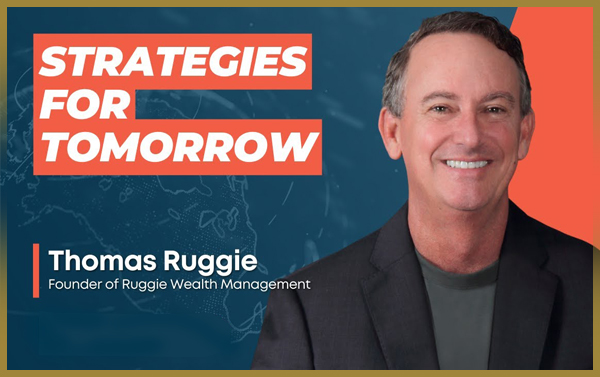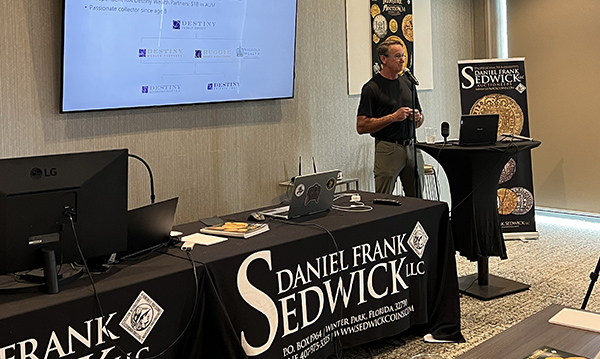By Rob Clark, CFP®
Managing Partner and President
Ruggie Wealth Management
While a 529 plan has long been a popular choice to save for educational expenses, (typically your child’s), a provision in the SECURE 2.0 Act passed in 2022, allows leftover funds from a 529 plan to be rolled over into a Roth IRA for the plan’s beneficiary starting in 2024, adding flexibility to his or her long-term financial planning.
What Is a 529 Plan?
A 529 plan is a tax-advantaged savings plan designed to encourage saving for future education costs. Contributions to the plan grow tax-free, and withdrawals for qualified educational expenses (such as tuition, books, and room and board) are also tax-free. However, one question has been what to do with any leftover funds if the beneficiary doesn’t need all the money for education.
Key Details and Limits on the Rollover
While this provision is a significant enhancement, there are some important restrictions and rules to keep in mind:
- Lifetime Limit: The total amount that can be rolled over from a 529 plan to a Roth IRA is capped at $35,000. This is a lifetime limit, so once you’ve rolled over this amount, no more 529 funds can be transferred into a Roth IRA.
- Plan Age Requirement: The 529 account must have been open for at least 15 years before you can roll over any funds. This ensures that the 529 plan is used primarily for its intended purpose—education savings—before being shifted to retirement savings.
- Annual Contribution Limits Apply: The rollover amount counts toward the annual Roth IRA contribution limit, which is $6,500 for 2024 (or $7,500 if the beneficiary is age 50 or older). This means that even if you have more than $6,500 available to roll over, you’ll be limited by the yearly Roth IRA contribution cap.
- Income Limits for Roth Contributions Don’t Apply: Usually, Roth IRA contributions are subject to income limits, but these restrictions do not apply to rollovers from a 529 plan. Regardless of your child’s income, he or she can rollover funds into a Roth IRA as long as the other requirements are met.
- Only for the Beneficiary: The funds must be rolled over into a Roth IRA for the 529 plan’s beneficiary. If you want to change the beneficiary, you’ll need to adhere to existing 529 plan rules, which allow for transfers to certain family members without penalty.
Benefits of Rolling Over Funds to a Roth IRA
The ability to rollover 529 funds to a Roth IRA offers several advantages:
- Tax-Free Growth: Roth IRAs allow for tax-free growth and tax-free withdrawals in retirement. By rolling over funds from a 529 plan to a Roth IRA, your child can take advantage of tax-free growth on their retirement savings.
- Flexible Use: Unlike 529 plans, which restrict withdrawals to qualified education expenses, Roth IRAs offer greater flexibility. While withdrawals from a Roth IRA before age 59 ½ may be subject to taxes and penalties, your child can still use these funds for other purposes without the strict educational restrictions of a 529.
- Retirement Savings Boost: For many young people, it can be challenging to start saving for retirement. This rollover option provides an automatic boost to their retirement savings and potentially decades of tax-free growth.
- No Tax or Penalty on the Rollover: As long as the rollover is done within the established rules, there are no taxes or penalties associated with transferring funds from a 529 to a Roth IRA.
Key Considerations
Before deciding to rollover funds from a 529 plan to a Roth IRA, consider the following:
- Educational Needs: Be sure your child will not need the funds for future educational expenses. Once the money is transferred to a Roth IRA, it cannot be used for education without facing taxes and penalties for early withdrawals.
- Contribution Limits: Since the rollover is subject to the annual contribution limits of the Roth IRA, it may take several years to fully move the $35,000 maximum from a 529 to a Roth IRA.
- Long-Term Planning: Consider your child’s long-term financial goals. If he or she is already well-positioned for retirement, the 529 funds might be better used for education or another purpose, like transferring to other family members for their education needs.
How to Start the Process
If you have a 529 plan with leftover funds and want to take advantage of the new rollover option, follow these steps:
- Review Your 529 Plan: Make sure the account has been open for at least 15 years. If not, you’ll need to wait until it meets that requirement before rolling over funds.
- Understand Your Roth IRA Limits: Be aware of the annual contribution limit for Roth IRAs and plan accordingly.
- Contact Your Plan Administrator: Not all 529 plans may have processes in place for the rollover yet, as this rule is still new. Contact your 529 plan provider to understand the specific procedures and paperwork required to initiate a rollover.
- Monitor Progress: Since the rollover may need to be spread over several years due to contribution limits, track your progress each year and ensure the funds are properly transferred.
We’re here to help you and your child make the right decisions for his or her financial situation.
Conclusion
Rolling over funds from a 529 plan to a Roth IRA offers a new and flexible way to help secure your child’s financial future. By understanding the rules and taking a strategic approach, you can maximize the value of your savings, giving your child a strong foundation for both education and retirement.
Interested in learning more? Call me at 407.644.2701 or contact me by email at rclark@ruggiewealth.com.












